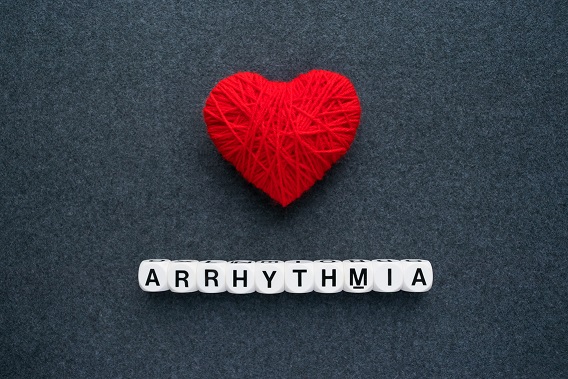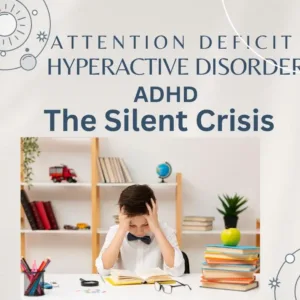Introduction :
Cardiac Resynchronization Therapy (CRT) is a remarkable medical advancement that has transformed the lives of countless individuals suffering from heart rhythm disorders. This therapy involves the use of specialized devices to help resynchronize the heart’s electrical signals, ensuring efficient pumping and reducing the symptoms of heart failure.
Understanding Heart Rhythm Disorders :
To comprehend the significance of Cardiac Resynchronization Therapy , one must first grasp the concept of heart rhythm disorders. Conditions such as atrial fibrillation, ventricular tachycardia, and heart block can disrupt the heart’s normal electrical patterns. These disorders can lead to irregular heartbeats, decreased cardiac output, and, ultimately, heart failure.

The Role of CRT Devices :
CRT devices, including Cardiac Resynchronization Therapy Defibrillators (CRT-D) and Cardiac Resynchronization Therapy Pacemakers (CRT-P), are engineered to address heart rhythm disorders. They consist of a pulse generator, which is placed beneath the skin, and thin wires (leads) that are threaded into the heart’s chambers.
How CRT Works :
Cardiac Resynchronization Therapy works by precisely timing electrical impulses to the heart’s ventricles. By doing so, it helps coordinate the contraction of the left and right ventricles, ensuring a more synchronized and efficient pumping action. This synchronization can improve the heart’s ability to pump blood, which is especially beneficial for those with heart failure.
Identifying CRT Candidates :
Not everyone with heart rhythm disorders is a candidate for CRT. Healthcare providers consider various factors when determining eligibility, which are follows ;
-
Heart Failure:
- Left Ventricular Systolic Dysfunction: Cardiac Resynchronization Therapy is indicated for patients with heart failure and reduced left ventricular ejection fraction (LVEF) typically less than or equal to 35%. This means that the left ventricle’s ability to pump blood is impaired.
-
QRS Duration:
- Prolonged QRS Duration: Cardiac Resynchronization Therapy is typically recommended for individuals with a widened QRS complex on their electrocardiogram (ECG), usually greater than 150 milliseconds. The prolonged QRS duration is indicative of electrical dysynchrony within the heart’s chambers.
-
Heart Failure Symptoms:
- Heart Failure Symptoms: Cardiac Resynchronization Therapy is typically considered for patients who continue to experience moderate to severe heart failure symptoms despite optimal medical therapy. These symptoms may include shortness of breath, fatigue, reduced exercise tolerance, and fluid retention.
-
New York Heart Association (NYHA) Functional Class:
- NYHA Functional Class II-IV: Patients in NYHA functional class II, III, or IV heart failure are candidates for CRT. These classes represent varying degrees of heart failure severity, with class II being mild and class IV being the most severe.
-
Sinus Rhythm:
- Sinus Rhythm: Patients should be in normal sinus rhythm, meaning their heart should be in a regular, coordinated rhythm when not in atrial fibrillation or other irregular rhythms.
-
Medication Optimization:
- Medication Optimization: Patients should have received optimal medical therapy for heart failure, including ACE inhibitors or angiotensin receptor blockers, beta-blockers, and, when appropriate, mineralocorticoid receptor antagonists, to ensure that their heart failure is well-managed before considering Cardiac Resynchronization Therapy.
-
Non-Ischemic or Ischemic Cardiomyopathy:
- Both Non-Ischemic and Ischemic Cardiomyopathy: Cardiac Resynchronization Therapy can be considered for patients with either non-ischemic (not related to coronary artery disease) or ischemic (related to coronary artery disease) cardiomyopathy.
-
Ambulatory Patients:
- Ambulatory Patients: Cardiac Resynchronization Therapy is generally indicated for patients who are ambulatory, meaning they can engage in daily activities and exercise. It may not be appropriate for patients who are bedridden or too frail to benefit from improved heart function.
-
Life Expectancy:
- Reasonable Life Expectancy: Patients should have a reasonable life expectancy and should be expected to gain a substantial quality of life benefit from Cardiac Resynchronization Therapy.
The CRT Implantation Procedure :
The implantation of CRT devices is a minimally invasive surgical procedure. During the surgery, a cardiac electrophysiologist inserts the leads into the heart and connects them to the pulse generator, which is typically placed just beneath the collarbone. The procedure is performed under local anesthesia, and most patients can return home within a day or two.
Benefits of CRT :
The benefits of CRT are significant and far-reaching:
-
Improved Quality of Life :
Patients often report reduced symptoms of heart failure, such as shortness of breath and fatigue, leading to a better quality of life.
-
Enhanced Exercise Tolerance:
CRT can help patients become more active and engage in physical activities they may have had to avoid previously.
-
Reduced Hospitalization:
By stabilizing heart function, Cardiac Resynchronization Therapy can decrease the need for hospital admissions due to heart failure exacerbations.
-
Prolonged Life Expectancy:
Cardiac Resynchronization Therapy has been shown to extend the lifespan of individuals with heart failure.
Potential Risk Factor :
1.1. Heart Failure Severity:
The severity of heart failure is a critical factor in determining the suitability for Cardiac Resynchronization Therapy. Patients with more advanced heart failure symptoms are more likely to be considered for CRT. However, this also means they may have a higher risk of complications due to their overall health status.
1.2. Underlying Heart Conditions:
Patients with underlying heart conditions, such as coronary artery disease, valvular heart disease, or structural heart abnormalities, may have a higher risk of complications during Cardiac Resynchronization Therapy implantation due to the complexity of their cardiac anatomy.
1.3. Age:
Advanced age can be a risk factor for Cardiac Resynchronization Therapy complications. Older patients may have other medical conditions and less physiological reserve, which can increase the risk of adverse events during or after the procedure.
1.4. Other Medical Conditions:
Patients with coexisting medical conditions, such as diabetes, kidney disease, or respiratory disorders, may face a higher risk of complications. These conditions can complicate the management of heart failure and Cardiac Resynchronization Therapy .
1.5. Anatomical Variability:
The anatomy of a patient’s coronary veins and heart chambers can affect the successful placement of CRT leads. Anatomical variations can make it more challenging to achieve optimal lead placement and, in some cases, lead to complications.
Complication Of CRT :
2.1. Infection:
Infection at the implantation site is a potential complication. This may involve the pocket where the pulse generator is placed or the leads themselves. Infections can be local or systemic and may require antibiotic treatment or lead removal.
2.2. Lead Displacement:
Displacement of the CRT leads can occur, resulting in suboptimal device function. Lead displacement may require repositioning or replacement of the leads, and it can lead to ineffective Cardiac Resynchronization Therapy.
2.3. Bleeding and Hematoma:
Bleeding during or after Cardiac Resynchronization Therapy implantation can result in hematoma formation, causing pain and discomfort. Severe bleeding may necessitate surgical intervention to control the bleeding and ensure proper device function.
2.4. Pneumothorax:
Pneumothorax, a collapsed lung, is a potential complication due to the proximity of the heart to the lungs. It can occur when a CRT lead punctures the lung tissue. This condition may require treatment with a chest tube.
2.5. Perforation of Cardiac Structures:
In rare cases, CRT leads may inadvertently perforate cardiac structures, such as the heart chambers or coronary vessels. Perforation can lead to bleeding, tamponade (compression of the heart), or other life-threatening complications.
2.6. Allergic Reactions:
Some patients may experience allergic reactions to the materials used in CRT devices or the medications administered during implantation. Allergic reactions can range from mild skin irritation to severe systemic responses.
2.7. Device-Related Complications:
Device-related issues, such as lead fractures, device malfunction, or battery depletion, can occur over time and may necessitate device replacement or revision procedures.
Conclusion :
Cardiac Resynchronization Therapy is a groundbreaking treatment that offers hope and improved quality of life to those battling heart rhythm disorders and heart failure. By understanding how Cardiac Resynchronization Therapy works, identifying suitable candidates, and recognizing the benefits and potential risks, we can appreciate the significance of this technology in transforming the landscape of cardiovascular care. With Cardiac Resynchronization Therapy, individuals can look forward to a healthier, more vibrant future, free from the constraints of heart failure.

Frequently Asked Questions (FAQ) on Cardiac Resynchronization Therapy (CRT):
What is Cardiac Resynchronization Therapy (CRT)?
Cardiac Resynchronization Therapy is a medical treatment for individuals with heart failure and certain heart rhythm disorders. It involves the implantation of a specialized device to resynchronize the heart's electrical signals, improving its pumping efficiency.
How does CRT work?
CRT devices send precisely timed electrical impulses to the heart's chambers, synchronizing the contractions of the ventricles. This synchronization helps improve the heart's pumping action, thereby enhancing blood flow.
Who is a suitable candidate for CRT?
Cardiac Resynchronization Therapy is typically recommended for individuals with moderate to severe heart failure, reduced ejection fraction, a widened QRS complex on their ECG, and who continue to experience heart failure symptoms despite optimal medical therapy.
What is the difference between CRT-D and CRT-P?
CRT-D (Cardiac Resynchronization Therapy Defibrillator) devices not only provide resynchronization but also include defibrillation capabilities to treat life-threatening ventricular arrhythmias. CRT-P (Cardiac Resynchronization Therapy Pacemaker) devices provide only resynchronization without defibrillation.
Is CRT a surgical procedure?
Yes, CRT implantation is a minimally invasive surgical procedure. It involves the placement of leads in the heart and a pulse generator typically positioned just beneath the collarbone. What are the risks associated with CRT? Complications may include infection, lead displacement, bleeding, pneumothorax, and allergic reactions. The risks are generally low but can vary depending on the patient's health and anatomy.
How long does the CRT implantation procedure take?
CRT implantation typically takes a few hours. It is performed under local anesthesia, and most patients can return home within a day or two.
What improvements can I expect with CRT?
Many patients report improved quality of life, reduced heart failure symptoms, enhanced exercise tolerance, fewer hospitalizations, and prolonged life expectancy. The degree of improvement varies from patient to patient.
Is CRT a permanent treatment, or can the device be removed?
Cardiac Resynchronization Therapy devices are typically considered permanent treatments. However, they can be explanted if necessary, but this decision is made on a case-by-case basis.
How often will I need to have the CRT device checked or adjusted?
Regular check-ups with a cardiac specialist are essential to ensure the device functions correctly. Adjustments to the device settings may be required during these visits.
Is CRT covered by insurance?
Cardiac Resynchronization Therapy is generally covered by health insurance plans. Patients should consult their insurance provider and healthcare team to understand the specific coverage and potential out-of-pocket costs.
Can I live a normal life with a CRT device?
Yes, most patients with CRT devices can lead relatively normal lives. The device helps improve heart function, allowing for increased physical activity and an enhanced quality of life.
Can I still undergo other medical treatments while having a CRT device?
You can continue to receive other medical treatments and medications while having a CRT device. Your healthcare provider will coordinate your care to optimize your heart health.
How long do CRT devices last?
Cardiac Resynchronization Therapy devices have a battery life that can vary but generally lasts around 5 to 10 years. When the battery nears depletion, a replacement procedure will be necessary.




